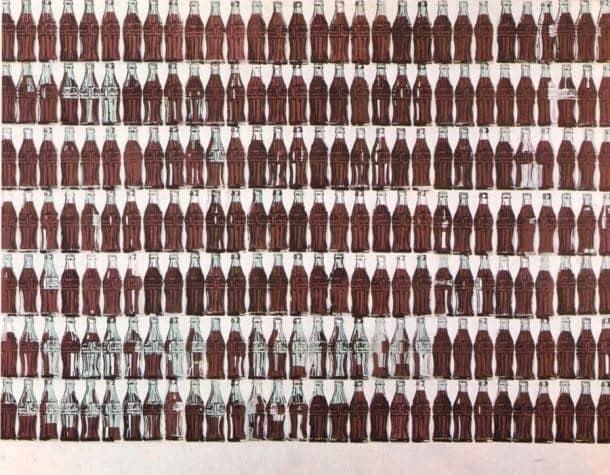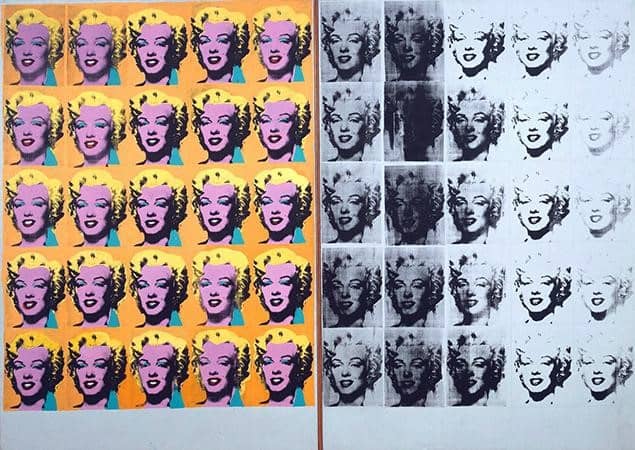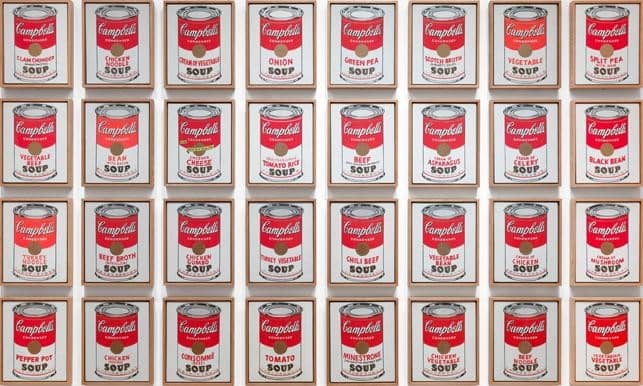Table of Contents
Andy Warhol is commonly referred to as the “pope of pop art.” He leads the Pop Art Movement. He defined Pop Art as “liking things.” He was born in 1928 and was brought up in Pittsburgh during the period of economic depression. Warhol entered the art world in the 1960’s. He is still remembered as one of the crucial figures in the postwar. Warhol along with other artists such as Roy Lichtenstein and James Rosenquist formed the Pop Art Movement. He used silk screening to create art. He made drawings based on themes such as death, culture, commodity, and celebrity. His work included the Ambulance Disaster, Big Electric Chair, Gold Marilyn’s, Campbell’s Soup Cans, MAO, One-Dollar Bill, Flowers, and others.
The 1960’s period was marked by the rapid economic expansion that was a result of the embracement of the Keynesian economic model. The model caused a rapid growth in the culture of the consumer and in the media. Warhol based his art on the exponential growth of media. One of his work is the series of “Death and Disaster” which helps to bring out the reality of suffering and death. The series has horrific and traumatic images. He painted the images to expose the hypocrisy and insensitivity of media houses toward the victims and using the tragedy to sell more news. He is seen as an artist who always told the truth and critiques the society for pretense and hypocrisy (Foster, 1996). Warhol’s works critique the “death drive of capitalism.”
Capitalism was an economic, political and social system that started in the 16th century in Europe. Capitalism system encourages producing of wealth privately. It involves the private ownership of factors of production such as land, capital, and labor operated under a free market. The system targets more on profit and money making. Capitalism led to the development of consumerism in the 20th century in the U.S. Warhol’s work operated within capitalist values. His first exhibition was about the paintings of Campbell’s soup cans. His work, for example, the trading stamps and the dollar bills were printed on paper for a certain amount of cash. His interest in art was centered on creating exchange instead of using value. Warhol also operated on the capitalist thinking for a higher financial worth. Despite his support for the capitalist system, he was no wage laborer but a producer of commodities and an industrialist. He set up a factory that would produce large quantities of his paintings by using mass production techniques to increase sales. His first factory was set up in 1963. Different types of people such as artists, street people, and musicians used to hang out in his factory and help him in creating ideas. Warhol brought a form of civilization to the capitalist. He also attacked the social hypocrisy of the ruling class that used artists to flatter since the rise of Flemish mercantile class in the 16th century (Foster, 1996). He believed that artists were just like plumbers and carpenters and that paintings should be seen as a source of money just like in any other professions. All his life he had a desire to social recognition and capital to the point that no matter how wealthier he got he never really felt that he had attained it.
One of the ways that Warhol work critiqued the death drive of capitalism is by transforming art from bring art to being a commodity. Culture turned into an industry especially after the post-war. People were trying to find a better life to improve their living. Cultural art production became incorporated in the capitalist economy. In the past years’ art was seen as aesthetic and spiritual in the society. Art had a symbolic meaning in the society. However, after the formation of the capitalist economy, art as transformed into a commodity. Art was given an economic value. It was sold to customers in the market. Warhol decided that his art would be used for exchange value. After art was given market prices, it became devalued and deteriorated which was a result of the capitalist forces.
A culture of consumer mass continued spreading in the United States. Pop trends also spread throughout the media. Warhol promoted consumerism in the capitalist economy by using two ways to evoke the mass culture. One way is through the use of celebrities the second method is using abstract anonymity. He explained that rich and poor consumers could see an advert of Coca-Cola on television and see the president, Liz Taylor drinking which increases the chances of the person drinking it too. “A coke is Coke, and no amount of money can get you a better Coke than the one the bun on the other corner is drinking” (Foster, 1996). He demonstrated the virtue of equality in mass production and how consumer products could be uniform. This technique was pro-capitalism.


Coca-Cola bottle Paintings, 1962
He then used the high value that the society placed on celebrities and public figures. Aiming celebrities is a capitalist technique that aims at increasing sales for his art pieces. Some series of works that he created were artworks of celebrities such as Marilyn Monroe, Elvis Presley and Liz Taylor (Foster, 1996). He also did some artwork on politicians such as Mao Zedong, a leader in China. Warhol becomes a major producer by using capitalist practices, and as a result, he possessed a vast amount of economic, cultural and social symbol capital. After the death of Marylyn Monroe in 1962, Warhol noticed that she was a worldwide obsession. He became captivated by the fame and pop culture and created a publicity photo of her that was back and white. The image was printed in many magazines and publications. The artist also made a series of the picture made of silk screens and garish colors. Warhol states that the idea or repetition reduces the meaning and significance of art, people stop seeing the person depicted in the art. However, through the art, Marilyn is remembered as a famous icon in the consumer culture.

Marilyn Monroe Paintings, 1962
Warhol expressed the consumer culture through artwork. Although he was deeply fascinated by the advertising techniques and mechanisms, he worked as a commercial artist for a living. The Pop Movement saw the use of imagery, photos of celebrities and visual language in advertising as a great way to promote brands. The popular culture was then commercialized and this enhanced the growth of the capitalist system. Artists then started producing artwork for the consumer culture. Today the consumerist system has led to the rise of a free market economy which does not support the ‘death drive of capitalism.’ One of Warhol’s art piece is the Campbell’s soup cans. The art consists of 32 canvases that look identical but have different types of the soup (Foster, 1996). The fine piece of art increased sales for the company. Warhol used repetitions to fix traumatic real to the viewers effectively and affectless. He was an advertisement illustrator at first and used a repetitive artistic method to get public attention. He used a capitalist technique to imitate the Campbell’s soup cans. He went further to use capitalist exploitation in his work after the soup cans led him into the fashion world. He created the new ‘Souper dress” that was mainly worn by the socialites in New York. The dress was made of paper. He started selling the dress as a special offer to any person who sent him a dollar and two soup cans to the company. Warhol gave the society his art pieces in exchange for money. Therefore, Warhol is seen to support the growth of consumerism, capitalist culture.

Campbell’s Soup Cans Paintings, 1962
Another way that Warhol’s works support capitalism is through mass production in the society. In his works, he “acted like a machine” (Foster, 1996). He says he is a machine too and makes serial product-images as good as a machine. Warhol is focused on the compulsion to repeat and play like a machine to produce enough for the society consumption. He suggests that if you can’t beat it, join it. He says that the more you perform an action it might lead to automatism or autism. Mass production led him to repeat the 32 cans of soup not for artistic reason but only because there were 32 different flavors. He claimed that art should not only be for a selected few but the mass of the American people. He produced artwork on a mass scale to support that in a capitalist system mass production is a necessity. One way he uses in the mass production is through the object of taste, for example, some prefer a wallpaper of flowers while other prefer that of the folk logo of cows. The other method is through the object of consumption. The dollar bill is another work that promotes the growth of the capitalist system. The artist used money as a piece of artwork and duplicated the images through silk-screening. The image of a dollar was a symbol and was finally auctioned for about eight to twelve million dollars. Later the 200 One Dollar Bill was told to an anonymous buyer at a price. To Warhol, money was what differentiated rich and poor. The artist developed a relationship between art and money and making money out of art became acceptable.

One Dollar Bill Painting, 1962
Conclusion
In conclusion, Andy Warhol was a great artist who explored pop culture in this work. He used brands and celebrities in his drawings. He is remembered as a famous commercial illustrator. Images of Campbell Soup Cans, Coca-Cola, and Marilyn Monroe are some of his pop art work. Among his achievements are representing new ways of advertising and using celebrity’s images as fine art. Andy Warhol introduces the consumerism in the art industry. One of the things that portrayed his support for capitalism is the transforming of art into a commodity. Art was given a market price, and other artists also started selling their artwork. The other thing that influenced consumerism and capitalism was the use of advertising techniques. Mass production also influenced the capitalist system. Mass production is necessary for a consumerist society. His work on Coca-Cola also portrayed uniformity of consumer goods which is essential in a free market and a capitalist economy. It is therefore right to say that Warhol’s works cliqued the death drive of capitalism.
Foster, H. (1996). Death in America. October, 75, 37-59.
